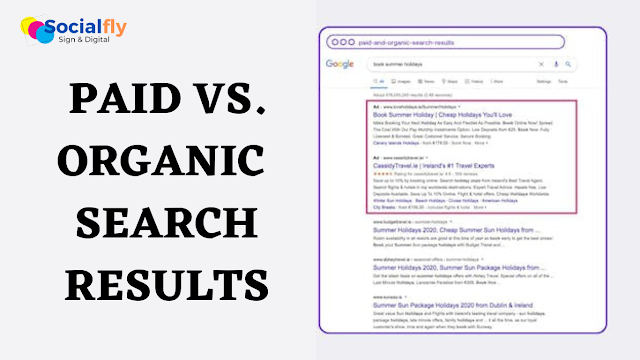In digital marketing, SEO is a component that helps improve the visibility and ranking of a website in search engine results pages (SERPs). By using various optimization techniques and tactics, digital marketers aim to make a website more attractive to search engines like Google, which can drive more organic traffic to the site. This increased visibility can lead to increased credibility and conversions, making SEO a crucial aspect of an overall digital marketing strategy. SEO involves optimizing various elements of a website, including its content, structure, and code, to improve its ranking in search engine results.
Paid and organic search are two different methods of appearing on search engine results pages (SERPs). The main differences between the two are:
Cost: Paid search involves paying for ad space in search results, while the organic search is free and relies on the quality and relevance of a website's content and optimization to rank in search results.
Speed: Paid search results can appear almost immediately after setting up an advertising campaign, while it can take time to see results from organic search optimization efforts.
Control: Paid search gives the advertiser more control over the appearance and placement of their ads while ranking in organic search results is determined mainly by the search engine's algorithm and factors such as the quality and relevance of a website's content and optimization.
Audience: Paid search targets users who are actively searching for specific keywords or phrases, while the organic search can reach a broader audience of users who may be casually browsing for related content.
In conclusion, both paid and organic search have their own benefits and limitations. A well-rounded digital marketing strategy often involves a combination of both to reach a wider audience and achieve the desired results.
The three pillars of SEO
1. Content: Content is the foundation of any successful SEO strategy. It must be high-quality, relevant, and valuable to users and search engines. This includes keyword-rich content that accurately reflects the purpose and theme of a website, as well as regularly updated content that keeps users engaged.
2. Technical optimization: Technical optimization refers to the behind-the-scenes elements of a website, including its code, structure, and URLs, that impact its visibility and ranking in search results. This includes ensuring a website is mobile-friendly, has a fast load time, and uses clean and organized code.
3. User Experience (UX): User experience is the overall experience a user has when interacting with a website, including its design, navigation, and content. A positive user experience can positively impact a website's ranking in search results, as search engines consider factors such as the amount of time users spend on a site and its bounce rate.
These three pillars work together to create a comprehensive and effective SEO strategy, and optimization in each area can lead to improved visibility and ranking in search results.
.png)

.png)
Really nice today's business need SEO candidates to growth businesses.
ReplyDelete